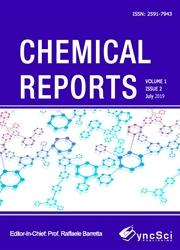Evaluation of an adsorption process for the treatment of leachates using biopolymers extracted from organic waste obtained from the poultry industry
引用次数: 1
Abstract
The adsorption capacity of three eggshell bioadsorbents was evaluated to remove contaminants from raw leachate. Optimal conditions for the removal of suspended solids, color, and organic compounds, as COD, were achieved by batch experiments with three levels of pH and absorbent concentrations. Kinetic studies and isotherms were developed to understand the behavior of COD removal by the bioadsorbents. The chemical and physical characterizations indicate the leachate used in the present study had characteristics between mature and intermediate leachates. The optimal adsorption conditions were pH 2.0 and 1.0 gram (0.5 g/L) of adsorbent. Adsorbent M showed the best adsorption capacities, removing 99.06% (1446 NTU) of turbidity, 86.25% (4140 UPt-Co) of color and 54.56% of COD (1530mg/L). The data obtained through the kinetic and isothermal tests were better fitted to the pseudo first order and Langmuir models, with an equilibrium adsorption capacity (Qe) of 139 mg of COD/g of adsorbent and a specific speed of 1.51 min-1.利用从家禽业获得的有机废物中提取的生物聚合物处理渗滤液的吸附工艺的评价
考察了三种蛋壳生物吸附剂对生渗滤液中污染物的吸附能力。通过三种pH和吸附剂浓度的批量实验,获得了去除悬浮物、颜色和有机化合物(如COD)的最佳条件。建立了动力学研究和等温线来了解生物吸附剂去除COD的行为。化学和物理表征表明,本研究使用的渗滤液具有介于成熟渗滤液和中间渗滤液之间的特征。最佳吸附条件为pH 2.0和1.0 g (0.5 g/L)吸附剂。吸附剂M的吸附性能最好,去浊度为99.06% (1446 NTU),色度为86.25% (4140 UPt-Co), COD为54.56% (1530mg/L)。通过动力学和等温实验得到的数据较好地符合拟一级模型和Langmuir模型,平衡吸附量(Qe)为139 mg COD/g吸附剂,比速度为1.51 min-1。
本文章由计算机程序翻译,如有差异,请以英文原文为准。
求助全文
约1分钟内获得全文
求助全文

 求助内容:
求助内容: 应助结果提醒方式:
应助结果提醒方式:


